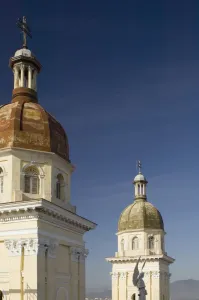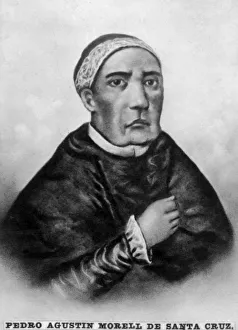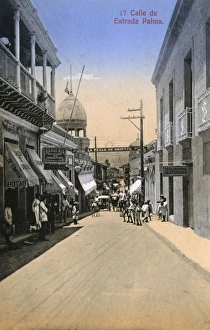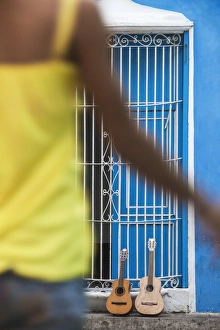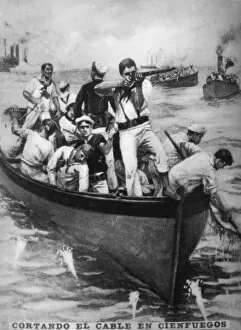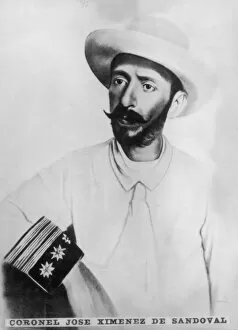Santiago de Cuba Collection (#6)
Santiago de Cuba is the second largest city in Cuba and the capital Province, and is located in the southeastern part of the country
307 Items
All Professionally Made to Order for Quick Shipping
-
Santiago de Cuba Collection
Santiago de Cuba is the second largest city in Cuba and the capital Province, and is located in the southeastern part of the country, on the Caribbean coast near Haiti. The city has a rich history that dates back to 1515 when it was founded by Spanish conquistador Diego Velázquez de Cuéllar. It was an important port during colonial times and played a major role in Cuban independence struggles. Today, Santiago de Cuba is known for its vibrant culture and lively music scene, with many popular festivals taking place throughout the year such as Carnaval and Fiesta del Fuego. It also offers visitors a unique mix of colonial architecture, stunning beaches, lush mountainside scenery and plenty of opportunities for outdoor activities such as hiking or diving.
+
Our beautiful Wall Art and Photo Gifts include Framed Prints, Photo Prints, Poster Prints, Canvas Prints, Jigsaw Puzzles, Metal Prints and so much more
The Santiago de Cuba collection from Media Storehouse offers a stunning array of wall art and framed prints that capture the essence of this vibrant city in North America. Our collection features a diverse range of images, including colorful street scenes, historic landmarks, and breathtaking landscapes that showcase the beauty and culture of Santiago de Cuba. From bustling markets to tranquil beaches, each piece captures the unique character and charm of this fascinating destination. Whether you're looking for a striking centerpiece for your living room or an eye-catching addition to your office decor, the Santiago de Cuba collection has something to suit every taste and style. Each print is expertly crafted using high-quality materials to ensure long-lasting durability and exceptional clarity. With its rich history, lively culture, and natural beauty, Santiago de Cuba is truly one-of-a-kind – and now you can bring a piece of it into your home with these beautiful prints from Media Storehouse.
+
What are Santiago de Cuba (Cuba North America) art prints?
Santiago de Cuba art prints are high-quality reproductions of artwork inspired by the vibrant culture and history of Santiago de Cuba, a city located on the southeastern coast of Cuba in North America. These prints showcase the unique architecture, landscapes, people, and traditions that make Santiago de Cuba such a fascinating destination for travelers and artists alike. The art prints available from Media Storehouse feature a wide range of styles and techniques, including watercolors, oil paintings, photographs, and digital designs. They are created using state-of-the-art printing technology to ensure that every detail is captured with precision and clarity. Whether you're looking to add some color to your home or office decor or want to give a thoughtful gift to someone who loves Cuban culture, Santiago de Cuba art prints are an excellent choice. With their vivid colors and intricate details, these prints capture the essence of this beautiful city in stunning detail.
+
What Santiago de Cuba (Cuba North America) art prints can I buy from Media Storehouse?
We offer a wide range of Santiago de Cuba art prints that capture the vibrant and colorful essence of this beautiful city in North America. These prints showcase the stunning architecture, scenic landscapes, and cultural heritage of Santiago de Cuba, making them perfect for anyone who loves to travel or appreciates fine art. Some of the popular Santiago de Cuba art prints available at Media Storehouse include images of historic landmarks such as Castillo del Morro and Parque Cespedes. You can also find breathtaking views of the Caribbean Sea, street scenes featuring classic cars and colorful buildings, as well as portraits capturing the spirit and energy of local people. Whether you are looking for a unique piece to decorate your home or office or want to give a special gift to someone who loves Cuban culture, we have something for everyone. With high-quality printing techniques and a variety of sizes and framing options available, these Santiago de Cuba art prints are sure to impress.
+
How do I buy Santiago de Cuba (Cuba North America) art prints?
To purchase Santiago de Cuba art prints from Media Storehouse, you can follow these simple steps. First, visit the Media Storehouse website and search for "Santiago de Cuba" in the search bar. This will bring up a selection of art prints featuring this location. Browse through the options until you find one that catches your eye. Next, select the size and format of print that you want to purchase. You may have several options available, such as canvas or framed prints. Once you have made your selection, add it to your cart and proceed to checkout. During checkout, enter your shipping information and payment details to complete your order. Your Santiago de Cuba art print will then be shipped directly to you. Whether you're looking for a beautiful piece of artwork for your home or office or a unique gift for someone special, purchasing Santiago de Cuba art prints from Media Storehouse is quick and easy.
+
How much do Santiago de Cuba (Cuba North America) art prints cost?
The cost of Santiago de Cuba art prints from Media Storehouse varies depending on the size and type of print selected. There are a variety of options available, including framed or unframed prints, canvas prints, and posters. The prices for these items can range from affordable to more expensive depending on the specific product chosen. It is important to note that the quality of these art prints is exceptional, with high-quality materials used in their production. Each print captures the vibrant colors and unique character of Santiago de Cuba, making them a great addition to any home or office space. If you are interested in purchasing Santiago de Cuba art prints from Media Storehouse, it is recommended that you browse through their selection to find a piece that fits your budget and style preferences. With so many options available at varying price points, there is sure to be something for everyone.
+
How will my Santiago de Cuba (Cuba North America) art prints be delivered to me?
Your Santiago de Cuba art prints from Media Storehouse will be delivered to you in a safe and secure manner. The company takes great care in packaging your artwork so that it arrives at your doorstep undamaged. Your prints will be carefully rolled up and placed inside a sturdy tube, which is then sealed with tape to prevent any moisture or dust from getting inside. Once the package has been prepared, it will be shipped out to you using a reliable courier service. Depending on where you are located, delivery times may vary, but rest assured that Media Storehouse works hard to ensure that your order arrives as quickly as possible. When your package does arrive, simply unroll the prints and enjoy them. Whether you choose to frame them or display them as-is, these beautiful pieces of art are sure to add some Cuban flair to any room in your home.





